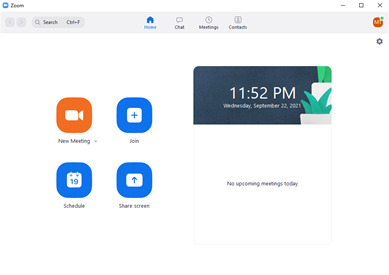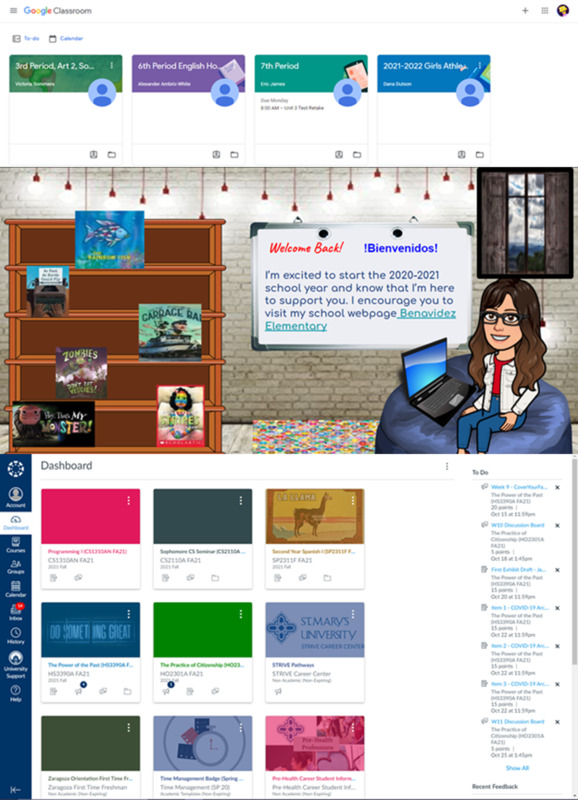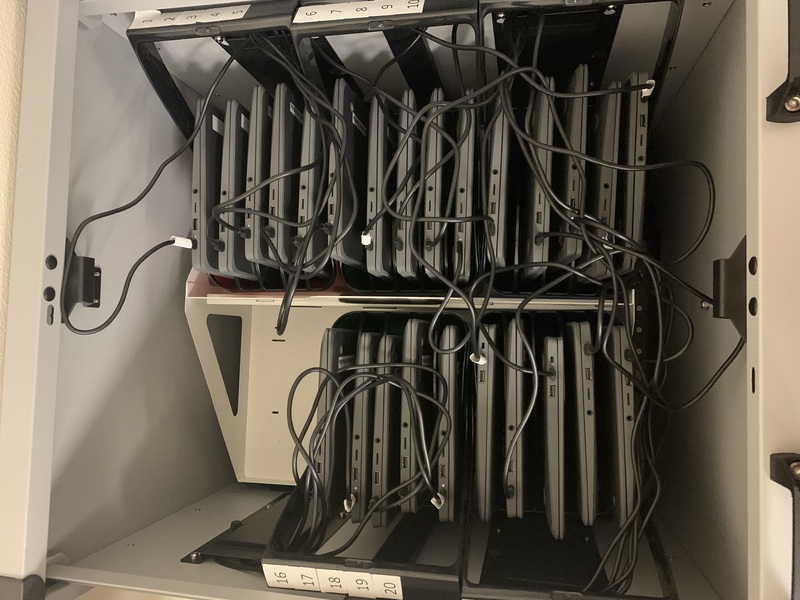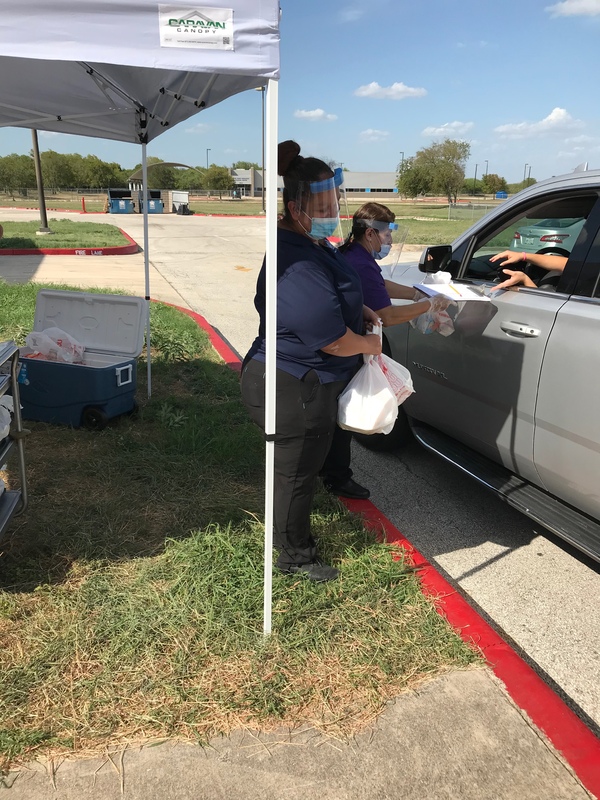The Educational Journey through a Pandemic
By: Mario Silvino Trevino, St Mary's University
Covid-19 affected everyone and everything. With no real warning, many people and organizations were completely unprepared for the challenges of a pandemic. One such institution that was faced with these challenges was the school system. We saw that on each level of the educational journey, there now formed a need for change. Schools, teachers and students now had to adapt if they wished to work towards their education. A few changes that were the result of the pandemic include the sudden need for a new classroom setting outside of in person classes, the creation of a way to supply kids with meals and technology they no longer had access to and take a peek at how teachers dealt with these changes.
The Classroom
The first instance in which we saw a need for change to occur involved the classroom. With in-person meetings no longer being a viable option due to Covid, schools needed to develop a way in which they could still meet and share information between students and teachers. For me, first as a high school student and then as a first-year college student, zoom meetings became the new go-to setting for class meetings. With the mix of zoom and other education apps such as Google Classroom, Canvas, and Seesaw, we now had the tools for what would become the “new classroom” that got us through the early years of the pandemic.

Learning through a Pandemic
With in-person classes no longer being an option, the new classroom format for many had become zoom meetings.

Fresh Look at the Outdated Classroom
A look at how elementary, middle and high schools adapted and developed their own form of a classroom that fit the needs of the age groups that their kids fell in. They began using Google Classroom, Canvas, and Seesaw to connect with their students.
The Supplies
The next major shift that occurred in schools dealt with the school supplies. Schools had to find a way to meet children's technological and nutritional needs while simultaneously keeping them home and safe. In a similar sense, college students had to find a way to get the new technology that was required for certain classes. From online books that contained their homework to apps that would allow them to perform their labs from their house, these now became necessities that many schools were not prepared for. Another problem that needed addressing was the lack of food some of these students now had to deal with. With schools being closed some students lost their only access to what was sometimes their only two meals of the day.

From Notebooks to Ipads and Chromebooks
In schools, especially those that were classified as title 1, ipads and Chromebooks were sent home with kids because many families couldn't afford the new technological needs of their children for them to attend their classes.

Lunch Time
With kids being out of school they no longer had access to breakfast and lunch. These meals that the school provided were in many cases their only meals of the day. As a result, schools began setting up times where the lunch ladies would pass out food for parents to pick up.
The Teachers
Educators had to make tremendous changes to their teaching just like the students they taught. Teachers and professors were just as blindsided by the pandemic as their students. They faced their own unique learning curve, because for many they had never used some of the applications or technology that was now necessary to hold class and continue teaching.

Alicia S Trevino Oral History, 2021/11/30
In this interview I sat down with my mom who has been in education for 20 plus years. While now she focuses her attention on students who struggle with dyslexia, her experience and connections with teachers from all over her distract, giving her the insight she needs to share some of the experiences that have happened through this pandemic.

Mario A Trevino Oral History, 2021/11/30
In my second interview I talked with my dad. He has also been in education for his whole career. During this time he was a second grade teacher. He shares with us his experience as a bilingual teacher and his interactions with colleagues, students, and parents as well.
The Conclusion
The educational journey for many was affected by the pandemic. But now as we begin to approach what we can hope to be a “new normal” we must look back and analyze the changes we made to educational institutions and the process. While some of them may have been simply useful for the time being, some of these changes such as the use of sites such as Google Classroom or Canvas to centralize the location where students can go for help or the creation of programs that allow students access to technology in their homes may have been for the best. Determining how we can continue to better schools with this new gained experience will be a valuable next step as the pandemic eases.
